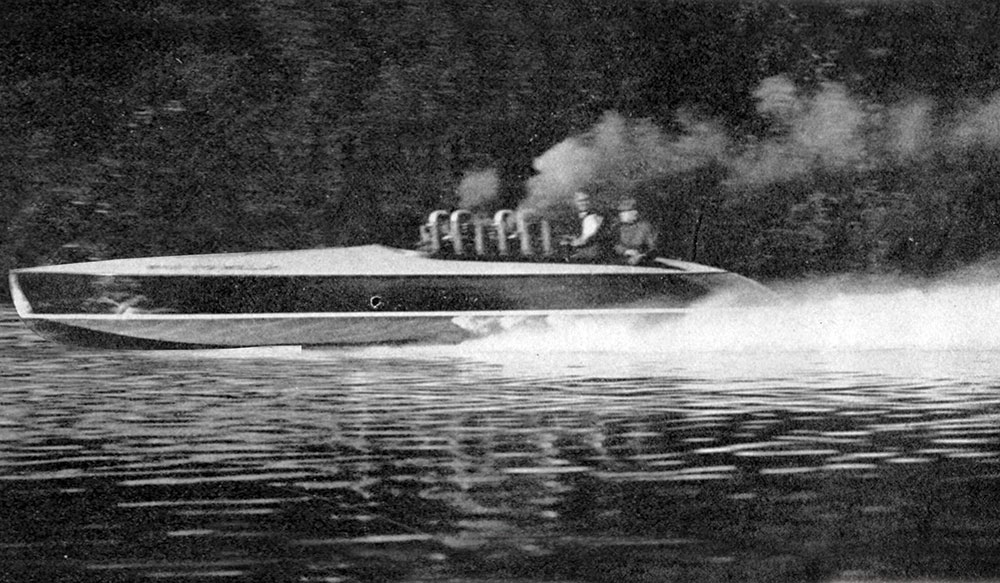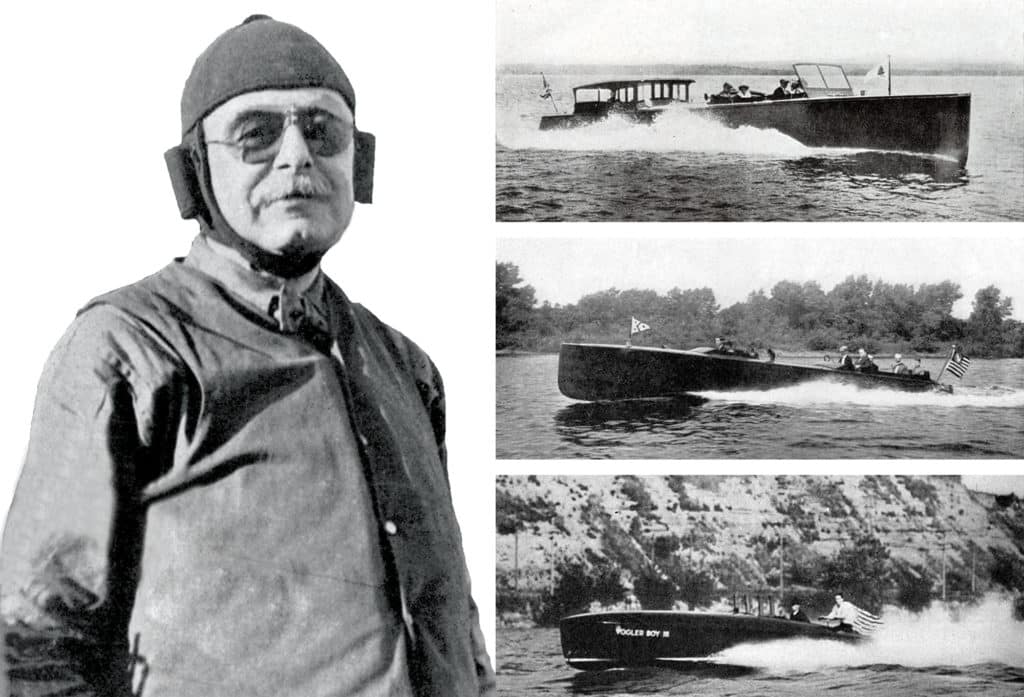
One might think the grin-inducing exhilaration from a 60-knot vessel is a relatively recent experience, but Yachting‘s January 1918 issue proves otherwise.
In 1917, the hydroplane Whip-po-Will Jr. (above), owned by American Power Boat Association President Commodore Albert N. Judson (below), hit 69.39 miles per hour, or 60.3 knots. It was a record, during an age when yacht racing was all the rage.
“A hydroplane, while known to be fast, had never been reckoned capable of showing the remarkable speed of 70 miles an hour.” – “The Swing of the Speed Pendulum,” Yachting, January 1918

Yachting argued that racing, the ultimate test under the highest possible speed, was an important means of standardizing the marine engine. That said, Judson predicted that a 100 mph (roughly 87-knot) speedboat would hit the water within a few years. In reality, it took more than a decade, achieved first on March 20, 1931, when legendary racer and boatbuilder Gar Wood hit 102 mph in Miss America IX, the winner of the 1930 Harmsworth Trophy.
It all goes to show that innovation and ingenuity are age-old in this sport.









